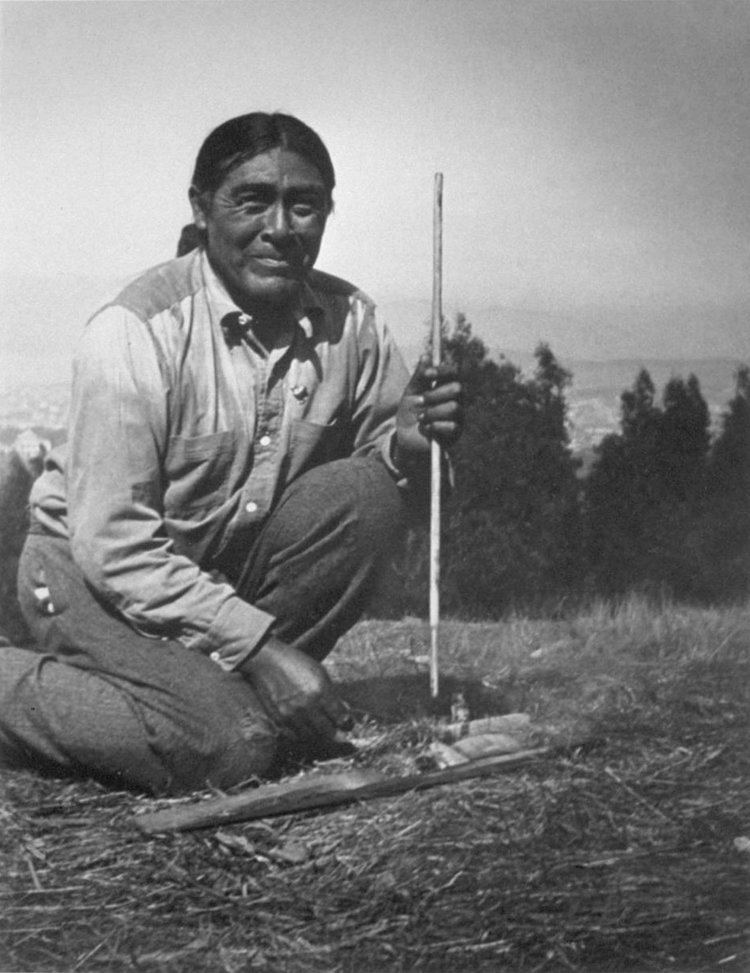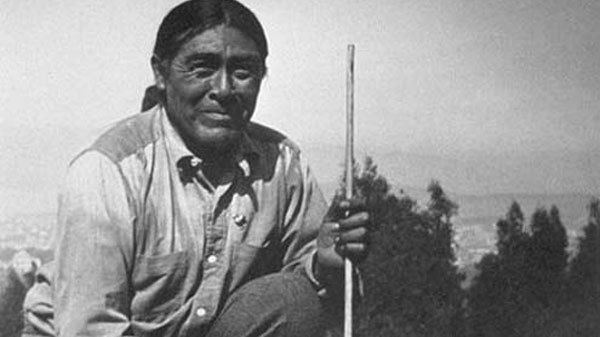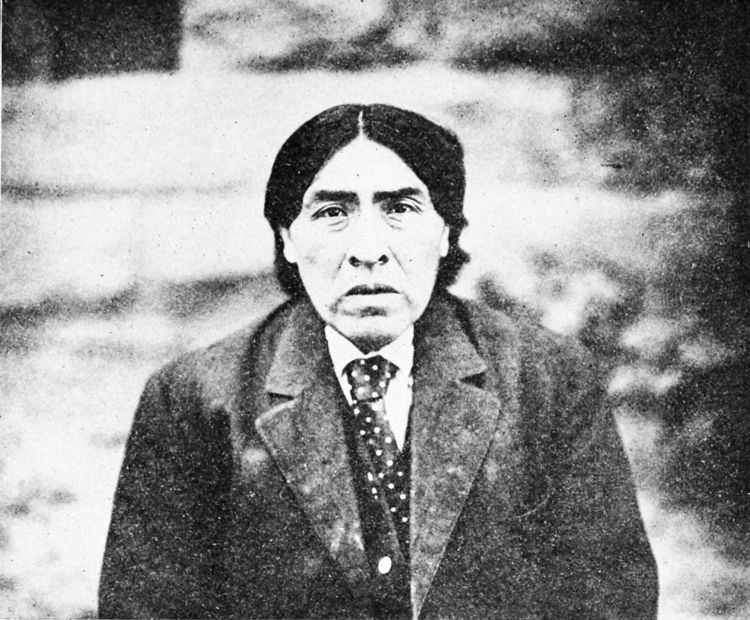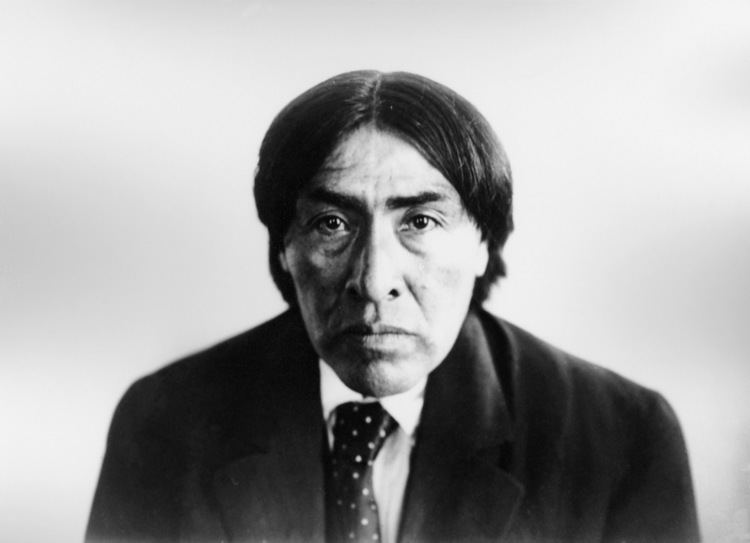Name Ishi Ishi Nationality American | Title (Man) | |
 | ||
Ethnicity Yahi people of California Similar People Alfred L Kroeber, Ursula K Le Guin, Karl Kroeber | ||
High school dxd new original soundtrack 21 d no ishi full hd 1080p
Ishi (c. 1861 – March 25, 1916) was the last known member of the Yahi, a group of the Yana of the U.S. state of California. Widely acclaimed in his time as the "last wild Indian" in America, Ishi lived most of his life completely outside Euro-American culture. At 50 years of age, in 1911, he emerged near the present-day foothills of Lassen Peak, also known as Wa ganu p'a.
Contents
- High school dxd new original soundtrack 21 d no ishi full hd 1080p
- Ishi mother prism official
- Early life
- Walking into the modern world
- Ishi revealing Yahi culture
- Illness and death
- Possible multi ethnicity
- Buildings and land
- Toolmaking
- Audio recordings
- Films
- Literature
- Stage productions
- Similar case
- References

Ishi means "man" in the Yana language. The anthropologist Alfred Kroeber gave this name to the man because in the Yahi culture, tradition demanded that he not speak his name or that of anyone who was dead. When asked his name, he said: "I have none, because there were no people to name me," meaning that no Yahi had ever spoken his name. He was taken in by anthropologists at the University of California, Berkeley, who both studied him and hired him as a research assistant. He lived most of his remaining five years in a university building in San Francisco.

Ishi mother prism official
Early life

In 1865, Ishi and his family were attacked in the Three Knolls Massacre, in which 40 of their tribesmen were killed. Although 33 Yahi survived to escape, cattlemen killed about half of the survivors. The last survivors, including Ishi and his family, went into hiding for the next 44 years, and their tribe was popularly believed to be extinct. Prior to the California Gold Rush of 1848–1855, the Yahi population numbered 404 in California, but the total Yana numbered 2,997.

The gold rush brought tens of thousands of miners and settlers to northern California, putting pressure on native populations. Gold mining damaged water supplies and killed fish; the deer left the area. The settlers brought new diseases such as smallpox and measles. The northern Yana group became extinct and the central and southern groups and Yahi populations dropped dramatically. Searching for food, they came into conflict with settlers, leading to bounties on the natives by the settlers. Prices included 50 cents per scalp and 5 dollars per head. In 1865, the massacre began while the Yahi slept in bed.

Richard Burrill wrote, in Ishi Rediscovered: "In 1865, near the Yahi’s special place, Black Rock, the waters of Mill Creek turned red at the Three Knolls Massacre. 'Sixteen' or 'seventeen' Indian fighters killed about forty Yahi, as part of a retaliatory attack for two white women and a man killed at the Workman’s household on Lower Concow Creek near Oroville. Eleven of the Indian fighters that day were Robert A. Anderson, Hiram Good, Sim Moak, Hardy Thomasson, Jack Houser, Henry Curtis, his brother Frank Curtis, as well as Tom Gore, Bill Matthews, and William Merithew. W. J. Seagraves visited the site, too, but some time after the battle had been fought."

Burrill continued, "Robert Anderson wrote, 'Into the stream they leaped, but few got out alive. Instead many dead bodies floated down the rapid current.' One captive Indian woman named Mariah from Big Meadows (Lake Almanor today), was one of those who did escape. The Three Knolls battle is also described in Theodora Kroeber’s Ishi in Two Worlds, but more information has come to light. It is estimated that with this massacre, Ishi's entire cultural group, the Yana/Yahi, may have been reduced to about sixty individuals. From 1859 to 1911, Ishi's remote band became more and more infiltrated by non-Yahi Indian representatives, such as Wintun, Nomlaki and Pit River individuals.

In 1879, the infamous Indian boarding schools started in California. The ranks of embittered reservation renegades who became the new "boys in the hills", to quote Robert Anderson, became a direct function of what new attacks or removal campaigns that the volunteers and military troops elected to carry out against the northern California Indian tribes during that time."
In late 1908, a group of surveyors came across the camp inhabited by two men, a middle-aged woman, and an elderly woman—Ishi, his uncle, his younger sister, and his mother, respectively. The former three fled while the latter hid herself in blankets to avoid detection, as she was sick and unable to flee. The surveyors ransacked the camp and Ishi's mother died soon after his return. His sister and uncle never returned.
Walking into the modern world
After the attack, Ishi spent three more years in the wilderness, alone. Finally, starving and with nowhere to go, at around the age of 50 on August 29, 1911, Ishi walked out into the western world. He was captured attempting to forage for meat near Oroville, California, after forest fires in the area.
"After the native was noticed by townspeople, the local sheriff took the man into custody for his own protection". The "wild man" caught the imagination and attention of thousands of onlookers and curiosity seekers. Professors at the University of California, Berkeley, Museum of Anthropology—now the Phoebe A. Hearst Museum of Anthropology (PAHMA)—read about him and brought him to their facility, then housed on the University of California, San Francisco campus in an old law school building. Studied by the university, Ishi also worked with them as a research assistant and lived in an apartment at the museum for most of the remaining five years of his life. In June 1915, he temporarily lived in Berkeley with the anthropologist Thomas Talbot Waterman and his family.
Ishi revealing Yahi culture
Waterman and Alfred L. Kroeber, director of the museum, studied Ishi closely over the years and interviewed him at length to help them reconstruct Yahi culture. He described family units, naming patterns, and the ceremonies that he knew, but much tradition had been lost because there were few older survivors in the group in which he was raised. He identified material items and showed the techniques by which they were made. Ishi provided valuable information on his native Yana language, which was recorded and studied by the linguist Edward Sapir, who had previously done work on the northern dialects.
Illness and death
Ishi, having come to live in San Francisco and lacking immunity to the "diseases of civilization", was often ill. He was treated by a Professor of Medicine at UCSF, Saxton T. Pope. Pope became close friends with Ishi, and learned from him how to make bows and arrows in the Yahi way. He and Ishi often hunted together.
Ishi died of tuberculosis on March 25, 1916. His friends at the university initially had tried to prevent an autopsy on Ishi's body since the body was to be kept intact according to Yahi tradition, but the doctors at the University of California medical school performed one before Waterman was able to stop it. Ishi's brain was preserved and the body cremated. Included alongside his remains were "one of his bows, five arrows, a basket of acorn meal, a boxful of shell bead money, a purse full of tobacco, three rings, and some obsidian flakes." Ishi's remains were interred at Mount Olivet Cemetery in Colma, near San Francisco, but his brain was put in a deerskin-wrapped Pueblo Indian pottery jar and sent to the Smithsonian Institution by Kroeber in 1917, where it remained until August 10, 2000, when descendants of the Redding Rancheria and Pit River tribes received the brain, according to both the letter and the spirit of the National Museum of the American Indian Act of 1989 (NMAI). According to Robert Fri, director of the National Museum of Natural History, "Contrary to commonly-held belief, Ishi was not the last of his kind. In carrying out the repatriation process we learned that as a Yahi–Yana Indian his closest living descendants are the Yana people of northern California." Once the brain and remains were returned, further information about them has remained private.
Possible multi-ethnicity
In 1994, Steven Shackley of UC Berkeley heard a paper by Jerald Johnson, who noted morphological evidence that Ishi's facial features and height were more typical of the Wintu and Maidu. He theorized that under pressure of diminishing populations, members of groups that were once enemies may have intermarried to survive. To further support this, Johnson presented oral histories from the Wintu and Maidu that told of the tribes' intermarrying with the Yahi. The debate on this has not been definitively settled, however, and the possibility of establishing the circumstances of his birth probably died with him.
In 1996, Shackley announced work based on a study of Ishi's projectile points and those of the northern tribes. He had found that points made by Ishi were not typical of those recovered from historical Yahi sites. Because Ishi's production was more typical of points of the Nomlaki or Wintu tribes and markedly dissimilar to those of Yahi, Shackley suggested that Ishi may have been only half Yahi and of mixed ancestry, related to another of the tribes. He based his conclusion on a study of the points that Ishi had made compared to others held by the museum from the Yahi, Nomlaki and Wintu cultures. Among Ishi's techniques was the use of what is now known in flintknapping circles as an Ishi stick, used to run long pressure flakes. As it was a traditional technique of the Nomlaki and Wintu tribes, the finding suggests Ishi may have learned the skill directly from a male relative from one of those tribes. Also small groups, they lived close to the Yahi lands and were traditional competitors and enemies of the Yahi.
Buildings and land
Toolmaking
Audio recordings
Films
Literature
Stage productions
Similar case
Ishi's story has been compared to that of the Congolese man Ota Benga, an Mbuti pygmy whose family had also died and was not given a mourning ritual, who had been taken from his home and culture, and who had been displayed as a zoo exhibit. Ota died on March 20, 1916, five days before Ishi.
